English Name:
Nymphaea alba L.: European White Waterlily
Nuphar lutea (L.) Sibth. & Sm.: Yellow Cowlily
Other Names in English (UK, USA, Canada, South Africa, Australia, New Zealand):
Nymphaea alba L.: White Water Lily, Water lily
Nuphar lutea (L.) Sibth. & Sm.: Yellow Pond-Lily, Yellow water-lily
Family: Nymphaeaceae
GENERAL DATA
Plant Parts: Root, flower, seed, and flower hydrosol.
Cultivation Mode: Wild collection/ Cultivated
In Manufacturing: Pharmaceutical, hydrosol, extract, oil, herbal tea, alcoholic and non-alcoholic drink, cosmetics, incense, perfumery, seasonings, spice.
In Food: Water Lily pops
🌸 Industries That Use Dried Water Lily Flower (Nymphaea alba L.)
The White Water Lily (Nymphaea alba), native to freshwater bodies across Europe and Western Asia, is a floating aquatic plant recognized for its large, fragrant white flowers and ethnobotanical importance. The dried petals and floral parts of this plant are used across various industries due to their calming, astringent, and aromatic properties.
1. Pharmaceutical & Herbal Medicine Industry
Water lily flowers have a long-standing use in European folk medicine for their sedative, anti-inflammatory, and astringent properties.
Applications include:
-
Herbal remedies for mild anxiety, insomnia, and nervous tension
-
Topical applications for skin irritation and inflammatory conditions
-
Used in gargles and oral rinses for mouth ulcers and sore throat
-
Occasionally employed in urogenital formulations (as demulcent)
✅ Forms used: dried petals, tinctures, infusions, and herbal blends
2. Nutraceutical & Wellness Industry
Included in relaxation teas, detox blends, and mood-support formulations.
Typical uses:
-
Herbal sleep or calming teas
-
Blends that support emotional balance
-
Combined with herbs like Passionflower, Chamomile, or Valerian root
✅ Sold in bulk tea cuts, capsule formulations, or flower powder blends
3. Cosmetic & Skincare Industry
The flower extract is valued for its anti-inflammatory, antioxidant, and hydrating properties in skincare.
Applications:
-
Facial serums and calming masks
-
Used in herbal bath soaks for relaxation and skin conditioning
-
Soothing creams for redness and sensitive skin
✅ Appears in natural and Ayurvedic cosmetic lines
4. Aromatherapy & Wellness Spa Industry
Due to its mild floral fragrance and calming properties, dried water lily flowers are:
-
Added to bath sachets, relaxing bath salts, or steaming blends
-
Used in aromatic sachets and pillow blends
-
Featured in flower meditation rituals or herbal incense
✅ Symbolic of peace, purity, and tranquility in spa rituals
5. Ethnobotanical, Ritual & Cultural Use
In historical and cultural contexts, Nymphaea alba has been associated with:
-
Symbolism of purity and rebirth in ancient European and Egyptian lore
-
Occasionally used in ritual baths or offerings
✅ Sometimes used in floral crown making, temple decorations, or seasonal ceremonies
6. Academic & Botanical Research
Research is ongoing in areas like:
-
Phytochemical analysis: flavonoids, alkaloids, tannins
-
Studies on neurocalming and anti-inflammatory potential
-
Investigation into antioxidant activities and wound healing
✅ Summary of Key Applications
| Industry | Common Uses |
|---|---|
| Pharmaceutical & Herbal | Mild sedative, anti-inflammatory, astringent remedies |
| Nutraceutical & Wellness | Calming teas, detox blends, mood support formulas |
| Cosmetic & Skincare | Soothing serums, herbal baths, facial masks |
| Aromatherapy & Spa | Relaxation soaks, pillow blends, incense |
| Ethnobotanical & Ritual | Spiritual baths, floral symbolism, decorative uses |
| Academic Research | Phytochemical studies, sedative effects, anti-aging properties |
🌸 Key Features:
-
Part Used: Dried flowers (whole or petal fragments)
-
Naturally rich in flavonoids, tannins, and volatile oils
-
Mild sedative and astringent properties
-
Fragrant and symbolic in cultural uses
-
Often blended with Chamomile, Lavender, Blue Lotus, or Passionflower
🌼 Industries That Use Yellow Cowlily (Nuphar lutea L.)
Yellow Cowlily, or Yellow Water-lily, is a floating aquatic plant native to Europe, Western Asia, and North Africa, known for its leathery leaves and bright yellow, cup-shaped flowers. While less famous than Nymphaea species, it holds traditional value in herbal, cosmetic, and research fields.
1. Pharmaceutical & Herbal Medicine Industry
Traditionally used in European folk medicine, Nuphar lutea has astringent, antiseptic, and anti-inflammatory properties.
Applications include:
-
Topical treatments for eczema, acne, and wounds
-
Used in urogenital infections, including bladder inflammation
-
Flower extracts historically used in gonorrhea and gynecological disorders
✅ Forms: Dried flowers, roots, tinctures, decoctions, and poultices
2. Nutraceutical & Wellness Industry
Though less common, it appears in detox, hormonal balance, and immune support herbal formulas.
Common Uses:
-
Included in women’s health herbal blends
-
Supports bladder health and mucous membrane toning
-
Sometimes combined with Goldenrod, Bearberry, or Horsetail
✅ Often found in small-batch herbal remedies
3. Cosmetic & Personal Care Industry
Due to its mucilaginous and astringent nature, Nuphar lutea extracts are used in:
-
Toning facial products (masks, mists, lotions)
-
Scalp soothing formulations and herbal hair rinses
-
Skin-clearing herbal waters for acne-prone or oily skin
✅ Natural source of tannins and alkaloids
4. Aromatherapy & Spa Industry
While not strongly aromatic, dried yellow flowers are added to:
-
Detox baths and spa infusions
-
Skin-soothing herbal sachets
-
Occasionally used in relaxation and womb wellness rituals
✅ Symbolic of inner calm, fertility, and feminine balance
5. Ethnobotanical & Cultural Use
In some traditional systems, it has been linked to:
-
Feminine energy, fertility, and subtle sedative effects
-
Used historically by herbalists in midwifery and folk gynecology
✅ Known in older texts as a plant of restraint and cooling
6. Scientific & Botanical Research
Modern interest surrounds its:
-
Antimicrobial, antioxidant, and anti-inflammatory effects
-
Studies on its luteolin content, nuphar alkaloids, and phenolic compounds
-
Examined for antitumor and antiviral potential
✅ Important for studying traditional aquatic plant medicine
✅ Summary of Key Applications
| Industry | Common Uses |
|---|---|
| Pharmaceutical & Herbal | Astringent remedies, wound care, bladder and uterine support |
| Nutraceutical & Wellness | Herbal hormone tonics, detox formulas |
| Cosmetic & Skincare | Toners, masks, scalp remedies |
| Spa & Aromatherapy | Detox baths, skin sachets, womb soaks |
| Ethnobotanical Use | Traditional fertility and gynecological uses |
| Scientific Research | Antioxidant, antimicrobial, alkaloid studies |
🌼 Key Features:
-
Part Used: Dried flowers, sometimes roots and rhizomes
-
Rich in tannins, nupharine alkaloids, and luteolin
-
Used topically and internally in traditional systems
-
Symbolically associated with female strength and balance
-
Less fragrant, but visually vibrant and ritually valued
🌸 Comparison of Water Lily Types
| Feature / Use Case | White Water Lily (Nymphaea alba L.) | Yellow Cowlily (Nuphar lutea L.) | Blue Lotus (Nymphaea caerulea Savigny*) |
|---|---|---|---|
| Common Names | European White Water Lily, White Lotus | Yellow Pond Lily, Cow Lily, Brandy Bottle | Blue Egyptian Lotus, Sacred Blue Lily |
| Botanical Family | Nymphaeaceae | Nymphaeaceae | Nymphaeaceae |
| Flower Color | White (sometimes pinkish) | Bright Yellow | Deep Blue to Violet |
| Native Region | Europe and Western Asia | Europe, Western Asia, North Africa | Nile region (Egypt), Eastern Africa |
| Parts Used | Flowers, roots, leaves | Flowers, roots | Flowers (mainly petals and stamens) |
| Traditional Medicine Use | Astringent, sedative, wound care | Uterine tonic, astringent, anti-inflammatory | Aphrodisiac, mood enhancer, mild sedative |
| Phytochemical Highlights | Tannins, flavonoids, alkaloids | Nupharine alkaloids, tannins, mucilage | Apomorphine, nuciferine, flavonoids |
| Main Herbal Actions | Calming, astringent, anti-inflammatory | Cooling, mucosal toner, astringent | Euphoric, anti-anxiety, spiritual enhancer |
| Cosmetic Use | Facial toners, acne care, calming masks | Soothing tonics, scalp care | Luxury perfumes, hydrating masks |
| Wellness Use | Herbal baths, teas, uterine balance | Vaginal steams, bladder health support | Libido teas, relaxation blends, spiritual teas |
| Spiritual & Ritual Use | Symbol of purity and peace (European traditions) | Associated with fertility and feminine power | Sacred flower in Egyptian and Hindu rituals |
| Aromatherapy Use | Gentle floral sachets, emotional calm | Detox soaks, calming compresses | Deeply aromatic; used in perfumery and meditation |
| Market Availability | Moderate (mostly herbalists and skincare) | Rare/specialist suppliers | Widely sought in holistic, spiritual, and herbal shops |
| Symbolism | Purity, tranquility | Feminine strength, cooling power | Rebirth, ecstasy, divine connection |
✅ Summary Notes:
-
Nymphaea alba: Calming and skin-purifying in traditional European medicine.
-
Nuphar lutea: Strong uterine and mucosal tonic, less fragrant but traditionally revered.
-
Nymphaea caerulea: Most aromatic and psychoactive; often used for ceremonial, spiritual, and aphrodisiac applications.
PRODUCT NAME IN DIFFERENT LANGUAGES
Persian Name: نیلوفر/ Niloufar
German Name (Deutschland, Austria, Switzerland):
Nymphaea alba L.: Weiße seerose, Weißer Lotus, Weißblühende Seerose, Seerose weiß
Nuphar lutea (L.) Sibth. & Sm.: Gelbe Teichrose, Grosse Teichrose, getrocknete Seerose, gelbe Seerosen blumen
French Name (France, Belgium, Switzerland, Quebec):
Nymphaea alba L.: Nymphéa blanc, Nénuphar blanc
Nuphar lutea (L.) Sibth. & Sm.: Nénuphar jaune
HARVEST CALENDAR
Feb
Mar
Apr
May
Jun
Jul
Aug
Sep
Oct
Nov
Dec
To order European white waterlily, please contact us.
About Nymphaea Alba and Nuphar Lutea
Water lily is a perennial aquatic plant that has many species. This plant can grow in waters up to six meters deep.
The underground stem of the lotus is large, thick, fleshy, and bitter and grows inside the flower. The bark of the underground stem of the Water Lily is dark blue and blackish. But it has a white kernel.
From its underground stem, many branches grow towards the surface of the water, which in fact they are the leaves and peduncles of the plant. These petioles and peduncles are soft, hollow, very elongated, often yellowish brown and sometimes green with red veins, and their cross section is circular.
Its leaves are large, usually circular, sometimes oval, semi-glossy, and floating on the surface of the water. The underside of each leaf is often reddish. The petioles of these leaves are almost connected to the center of each leaf. Each leaf has a large gap that appears radially at the junction of the petiole.
Its flowers are big, white, sometimes cream color, sometimes pinkish and fragrant and grow on the surface of the water. Each flower has many elongated, almond-shaped, sometimes pointed, delicate, and completely separate petals.
The fruits of this plant are large and spherical, and there are many small appendages on their surface. These fruits are green at first. But after fully ripening, they turn brown. Inside each fruit there are several cavities in the form of concentric plates. A large number of small, slightly elongated and black seeds can be seen inside each cavity.
The best Waterlily has a white and fragrant flower.
Water Lily Temperament
The flower is at the second degree of cold and wet. The root is hot and dry. The seed of Waterlily is cold and dry.
Castalin derivative, HHDP-gluconic acid, Ellagic acid-galloyl hexoside, Phyllanthusiin B, Vescalagin or castalagin, Apigenin, Phyllanthusiin C, Corilagin (Galloyl HHDP hexoside), Pedunculagin (Bis HHDP-hexoside), Castalin, Phyllanthusiin C derivative, Lagerstannin C (Galloyl-HHDP-gluconic acid, Catechin or epicatechin, Lagerstannin B (flavogalloyl HHDP-gluconic acid), Granatin B(Galloyl-HHDP-DHHDP-hex), Dehydrated tergallic C-glucoside, Cinnamic acid derv., Phyllanthusin B derivative, Valoneic acid dilactone, Gallic acid derivative, Ellagitannin derivative, Digalloyl ellagic acid, Castalgin derivative, Chebulagic acid, Ellagic acid pentoside, Ellagic acid rhamnosyl, Geraniin, Vescalagin derivative, Galloyl ellagic acid, Gallic acid.
Water Lily Health Benefits
The Waterlily flower is a thirst quencher. Its flower hydrosol relieves the heat of the heart and liver.
Eating it heals internal and external wounds caused by excessive consumption of hot temperament herbs. Eating and inhaling it is a warm heart tonic, a warm brain tonic, helps to relieve hot headaches, dry brain, catarrh, hot cough, and chest tightness. Eating its flower with the appropriate herb is a heart and liver heat reliever and cures smallpox, typhoid, and severe fevers.
Eating Water Lily with Saffron and Cinnamon is a tonic for the heart and relieves suffocation. Eating its flower along with Poppy syrup reduces the intensity of sexual desire and helps to cure chronic diarrhea, intestinal ulcer, semen leakage and nocturnal emission. Rubbing its decoction on the head relieves the headache.
Eating the underground stem of Waterlily reduces libido and is useful for treating chronic diarrhea, splenomegaly, intestinal ulcer, semen leakage and nocturnal emission. Keeping some underground stem of Waterlily in the mouth is proven to cure diphtheria and pharyngitis.
Poultice of its underground stem improves stomach pain, anal pain, bladder pain, splenomegaly, and anal edema. Poultice of its underground stem with water is effective in the treatment of vitiligo. Poultice of its underground stem with honey helps to cure alopecia areata. Rubbing the decoction of its underground stem with vinegar on warm swelling and covering it will remove it.
Eating its seeds improves leukorrhea. Its seeds poultice stops bleeding and relieves bladder pain.
Its flower hydrosol helps to treat smallpox, typhoid, severe fevers, bilious fevers, hot headache, hot cough, pleurisy, pneumonia, and hot palpitation.
Water Lily Dose
Eating Nymphéa blanc (French name) flowers up to 6 grams. 20 grams of its flower decoction. Its underground stem from 2 to 6 grams. Its seeds up to 6 grams.
Water Lily Side Effects
Eating all parts of the Nymphaea alba plant causes sexual weakness. Its flower is harmful to the bladder. Its seed causes sperm freezing.
Water Lily Modifiers
Nuts and honey to remove the harm of Water Lily plant components on sexual power. Rock candy and honey to remove the damage of its flower on the bladder.
🧾 Nutrition Facts – Dried Water Lily Flower (Nymphaea alba L.) (Per 100g)
Botanical Name: Nymphaea alba L.
Common Names: White Water Lily, European White Water Lily, Nenuphar
Part Used: Flower (dried)
Culinary and Traditional Use: Traditionally used in herbal infusions, calming tonics, spiritual and ritualistic preparations
🔹 General Composition (Per 100g, dried)
| Nutrient | Amount | % Daily Value (DV) |
|---|---|---|
| Calories | ~260 kcal | 13% |
| Water (residual) | ~7 g | — |
| Protein | ~9.8 g | 20% |
| Total Fat | ~3.1 g | 4% |
| • Saturated Fat | ~0.6 g | 3% |
| Carbohydrates | ~42 g | 15% |
| • Dietary Fiber | ~10.5 g | 38% |
| • Natural Sugars | ~4.2 g | — |
✅ Fiber-rich, mildly proteinaceous, low-fat herb with calming floral aroma
🔬 Mineral Content
| Mineral | Amount | %DV |
|---|---|---|
| Potassium | 890 mg | 19% |
| Calcium | 116 mg | 9% |
| Iron | 5.1 mg | 28% |
| Magnesium | 64 mg | 15% |
| Phosphorus | 89 mg | 7% |
| Manganese | 0.82 mg | 36% |
| Zinc | 1.1 mg | 10% |
| Copper | 0.19 mg | 21% |
💎 Good source of iron, potassium, magnesium, and manganese
🌿 Vitamin Content
| Vitamin | Amount | %DV |
|---|---|---|
| Vitamin C | 5.2 mg | 6% |
| Vitamin A (Carotenes) | ~480 IU | 10% |
| Niacin (Vitamin B3) | 1.9 mg | 12% |
| Riboflavin (B2) | 0.21 mg | 16% |
| Thiamine (B1) | 0.06 mg | 5% |
| Folate (B9) | 26 mcg | 7% |
🌱 Contains carotenes and moderate B vitamins for metabolic and visual health
🧪 Phytochemical & Bioactive Compounds
-
Flavonoids – Antioxidant activity; contributes to anti-inflammatory effects
-
Tannins – Mild astringent, useful in topical and gut applications
-
Alkaloids (trace) – Associated with sedative and antispasmodic effects
-
Mucilage – Supports gastrointestinal health and mucosal hydration
-
Polyphenols – Antioxidants with cellular protective roles
🩺 Health Benefits
| System | Potential Effects |
|---|---|
| Nervous System | Calming, sedative; may help with sleep and tension |
| Digestive Health | Mucilage supports gut lining and bowel balance |
| Urinary Tract | Traditionally used for mild diuretic actions |
| Immune System | Flavonoids and antioxidants aid cellular defense |
⚖️ Often used in traditional systems for nervous system regulation and female reproductive balance
⚠️ Usage & Safety Notes
-
Suggested Use (Herbal Tea): 1–3 grams dried per cup, steeped for 10 minutes
-
Avoid during pregnancy unless supervised
-
Not intended for high-dose or pharmaceutical extraction
-
May cause drowsiness in sensitive individuals
📦 Storage Guidelines
-
Store in airtight, opaque containers
-
Keep in a cool, dry place away from sunlight
-
Shelf life: 12–18 months if properly stored
-
Do not refrigerate unless humidity is a concern
📌 Disclaimer
This information is for educational and professional product documentation purposes only. Nutrient content may vary by growing region, harvest timing, and drying method.
🧾 Nutrition Facts – Dried Yellow Cowlily (Nuphar lutea L.) (Per 100g)
Botanical Name: Nuphar lutea L.
Common Names: Yellow Cowlily, Spatterdock, Pond Lily, Cow Lily
Part Used: Flower (dried)
Traditional Use: Calming herbal teas, folk remedies for inflammation, digestive and urinary support, ceremonial and ritual applications
🔹 General Composition (Per 100g, dried)
| Nutrient | Amount | % Daily Value (DV) |
|---|---|---|
| Calories | ~240 kcal | 12% |
| Water (residual) | ~8 g | — |
| Protein | ~7.9 g | 16% |
| Total Fat | ~2.2 g | 3% |
| • Saturated Fat | ~0.4 g | 2% |
| Carbohydrates | ~39 g | 14% |
| • Dietary Fiber | ~9.1 g | 33% |
| • Natural Sugars | ~3.6 g | — |
✅ Low-calorie, rich in fiber and mild protein, with subtle floral and earthy taste
🔬 Mineral Content
| Mineral | Amount | %DV |
|---|---|---|
| Potassium | 810 mg | 17% |
| Calcium | 98 mg | 8% |
| Iron | 4.3 mg | 24% |
| Magnesium | 59 mg | 14% |
| Phosphorus | 76 mg | 6% |
| Zinc | 0.94 mg | 9% |
| Manganese | 0.73 mg | 32% |
| Copper | 0.17 mg | 19% |
💎 Notable for iron, potassium, manganese, and trace minerals
🌿 Vitamin Content
| Vitamin | Amount | %DV |
|---|---|---|
| Vitamin C | 4.6 mg | 5% |
| Vitamin A (Carotenes) | ~420 IU | 8% |
| Niacin (Vitamin B3) | 1.5 mg | 10% |
| Riboflavin (B2) | 0.18 mg | 14% |
| Thiamine (B1) | 0.05 mg | 4% |
| Folate (B9) | 24 mcg | 6% |
🌱 Provides modest amounts of B vitamins and antioxidants
🧪 Phytochemical & Bioactive Compounds
-
Tannins – Astringent properties; supports skin and gut health
-
Flavonoids – Antioxidant and anti-inflammatory potential
-
Alkaloids (trace) – May contribute to nervous system modulation
-
Polyphenols – Cellular protection, modulate oxidative stress
-
Mucilage – Soothes mucous membranes, especially in the gut and lungs
🩺 Health Benefits
| System | Potential Effects |
|---|---|
| Nervous System | Traditionally used for calming and sedation |
| Digestive Health | Mucilage and tannins support gut health |
| Urinary System | Mild diuretic, historically used for cystitis |
| Inflammation | Flavonoids may contribute to systemic balance |
⚖️ Folk medicine often used Yellow Cowlily for its cooling, demulcent, and grounding properties
⚠️ Usage & Safety Notes
-
Suggested Use (Herbal Infusion): 1–2 grams of dried flower per cup
-
May cause drowsiness in some users
-
Not recommended for use during pregnancy without medical supervision
-
Not intended for internal use in high doses; limited modern clinical validation
📦 Storage Guidelines
-
Keep in tightly sealed, dry containers
-
Store away from direct sunlight and moisture
-
Shelf life: 12–18 months
-
Do not refrigerate unless needed for humidity control
📌 Disclaimer
All data provided for educational and quality documentation use. Actual nutritional content may vary slightly based on drying process and harvest conditions.
To order European white waterlily, please contact us.


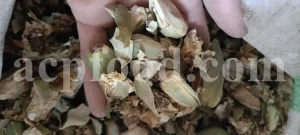
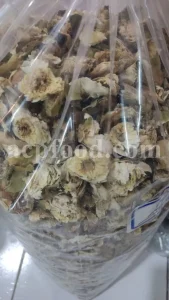
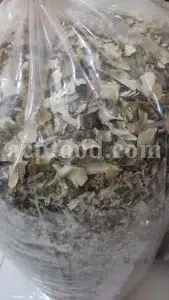
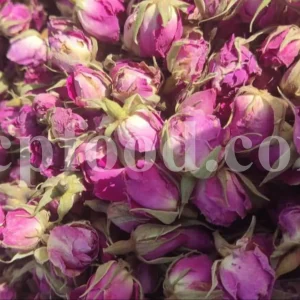
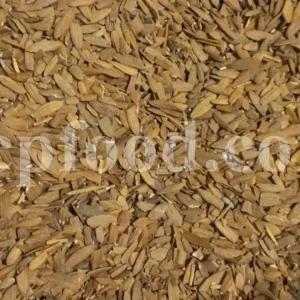
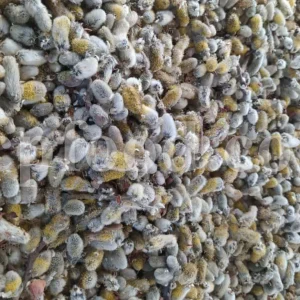
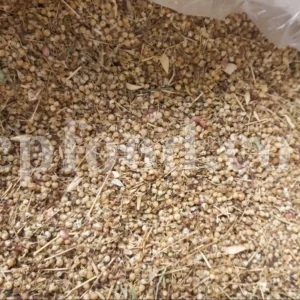
Reviews
There are no reviews yet.